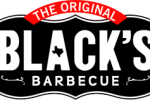Eleven B-17 crewmen left on the mission, seven came home
By Todd Blomerth
Special to the LPR
It is July of 1944. You are the parents of six sons. The oldest five are in the Armed Forces of the United States. Four are overseas in combat zone assignments. A fifth will soon be there. The only son left at home, Michael is a young boy. You proudly display five Blue Stars in your front window. You’ve seen Gold Stars appear in your neighbors’ windows and seen the grieving parents attempt to deal with the death of a child. Every day the war drags on, the chances become greater that you too will lose a child to war.
Minor, your oldest, is with the 36th Infantry (“Texas”) Division which has been badly bloodied in Italy. Arthur (“Jack”) witnessed the attack on Pearl Harbor and is with the Army Air Force somewhere in the Pacific Theater. Risdon (“Buck”) is serving as a Military Policeman, somewhere in Italy. Douglas (“Tinker””) is a crewman on a B17 bomber somewhere in Europe. Harvey (“Salty”) has recently joined the Navy as a 17-year-old and will soon see combat as a sailor in the Pacific.
The daily life of Risdon Hendricks and his wife Sidney Frances (Pierce) Hendricks must have at times been excruciating. Thankfully, their boys all came home. It nearly wasn’t so.
Tinker Hendricks enlisted in the Army Air Force right after his eighteenth birthday. Soon he was at Sheppard Army Field, outside of Wichita Falls, Texas beginning his training as a bomber crew member. He completed his training as B17 aircrew man at Avon Park Army Air Field. The B17, dubbed “Flying Fortress,” was a high altitude, four-engine, heavy strategic bomber. The crew consisted of ten men: flight commander, co-pilot, navigator, bombardier, radio operator, flight engineer and upper turret gunner, two waist gunners, tail gunner and ball-turret gunner. By the summer of 1943, the “G” model was replacing older models. The aircraft bristled with firepower, having thirteen heavy machineguns. Despite its name, unless escorted to the target by fighters such as the P51 Mustang, it was no match against enemy air attacks. Even with fighter support, anti-aircraft or “flak” guns remained deadly.
For more, see this week’s edition of the Post-Register



